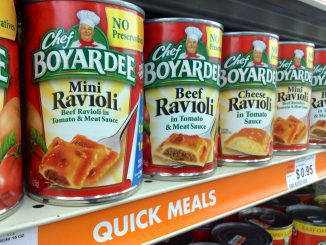
North Carolina history enthusiasts have definitely heard of Zebulon B. Vance, the Confederate colonel turned wartime governor in 1862. Many have also heard of John W. Ellis, the longtime politician and judge who died during his second term shortly after North Carolina seceded from the Union. Some may have heard of the lesser-known Henry Toole Clark, president of the Senate — the position of lieutenant governor did not exist until 1868 — who succeeded Ellis as governor.
Only a few have heard about Edward Stanly, a wartime governor who had the ability to make friends as easily as he could make enemies. (As a well-dressed and charming Whig Congressman, he once traded punches with Henry Wise of Virginia on the congressional floor.) His gubernatorial tenure lasted less than eight full months (May 26, 1862, to Jan. 15, 1863). While Clark was serving out his term and Vance prepared to be the next governor, Abraham Lincoln appointed Stanly — the self-styled inveterate “old line North Carolina Whig” — as military governor of North Carolina.
According to U.S. Secretary of War Edwin Stanton, the New Bern native’s goal was to “re-establish the authority of the federal government in the state of North Carolina.” The assignment proved to be difficult.
Edward was the son of esteemed congressman and well-known Federalist John Stanly, the namesake of Stanly County, who famously dueled Richard Dobbs Spaight in 1802. The political quarrel resulted in the death of Spaight and the outlaw of dueling in the Old North State.
During the Civil War, many revered the father and loathed the son. In Halifax County, Catherine Ann Edmonston penned poetry about the “false Stanley” dishonoring the family name: “Stanley the patriot shall be by men — Forgot — in Stanley — the Traitor!”
Prior to his appointment, Stanly had been in California. (He had unsuccessfully run for governor there in 1857.) When war broke out, Stanly offered his services to Lincoln. By early summer 1862, Gen. Ambrose Burnside and his troops had captured much of eastern North Carolina, including Roanoke Island, New Bern and Fort Macon. (Wilmington remained a Confederate port until Fort Fisher was captured in early 1865.) In late June, Burnside was ready to attack Goldsboro, an important rail hub that had always attracted the attention of Union commanders. Lincoln, however, needed Burnside to go to Virginia and help out a struggling George McClellan.
During Stanly’s brief tenure, he disagreed with Union authorities, had difficulty spreading Unionist sentiment, tried protecting private property from pillaging Federal troops, and opposed the Emancipation Proclamation.
In Stanly’s view, the role of the military governor was to “restore the old order of things.” North Carolina laws forbade teaching slaves how to read and write. So he opposed, for instance, a school for African-American children started by a man of “good Samaritan inclinations,” Vincent Colyer, superintendent of the p oor for the Department of North Carolina. The effort, he believed, “would do harm to the Union cause.”
During the war, many runaway slaves fled to Union lines. In particular, many fled to occupied New Bern, and their numbers grew rapidly. Union officials had what they considered a “perplexing” problem that required “discretion.” Stanly was in favor of returning slaves to their owners, as long as the owners took the oath of allegiance.
Stanly was outraged by and spoke against the conduct of some Union troops in eastern North Carolina. His speaking tour to foster Union sentiment was not well received in Union-occupied towns. Secessionist sympathizers were not moved; they deemed him the traitorous, rival sovereign. Meanwhile, Union allies believed Stanly was too soft on Confederates.
After the issuance of the Emancipation Proclamation, Stanly believed the mission of his office had changed. He resigned on Jan. 15, 1863.
Lincoln did not appoint another wartime governor of North Carolina.



